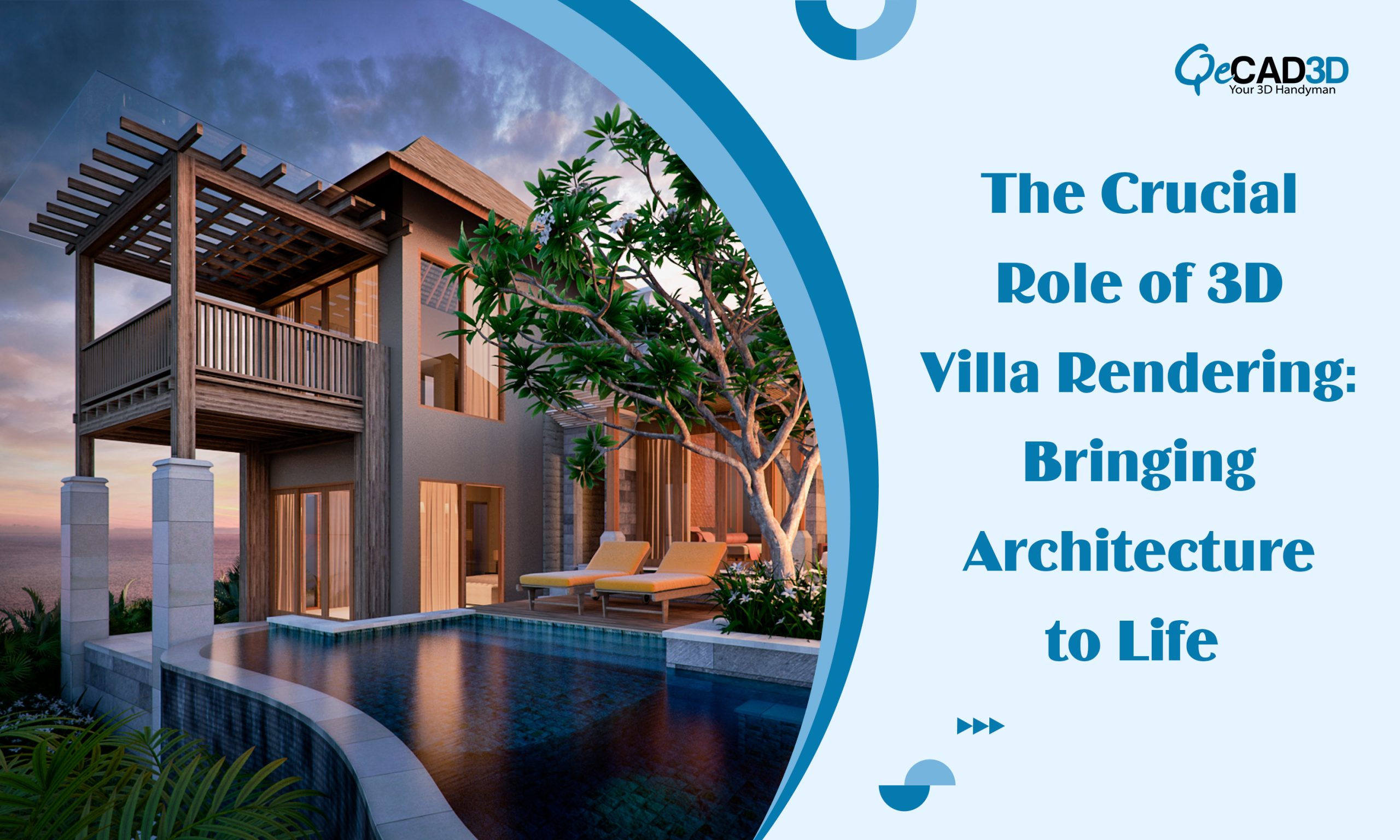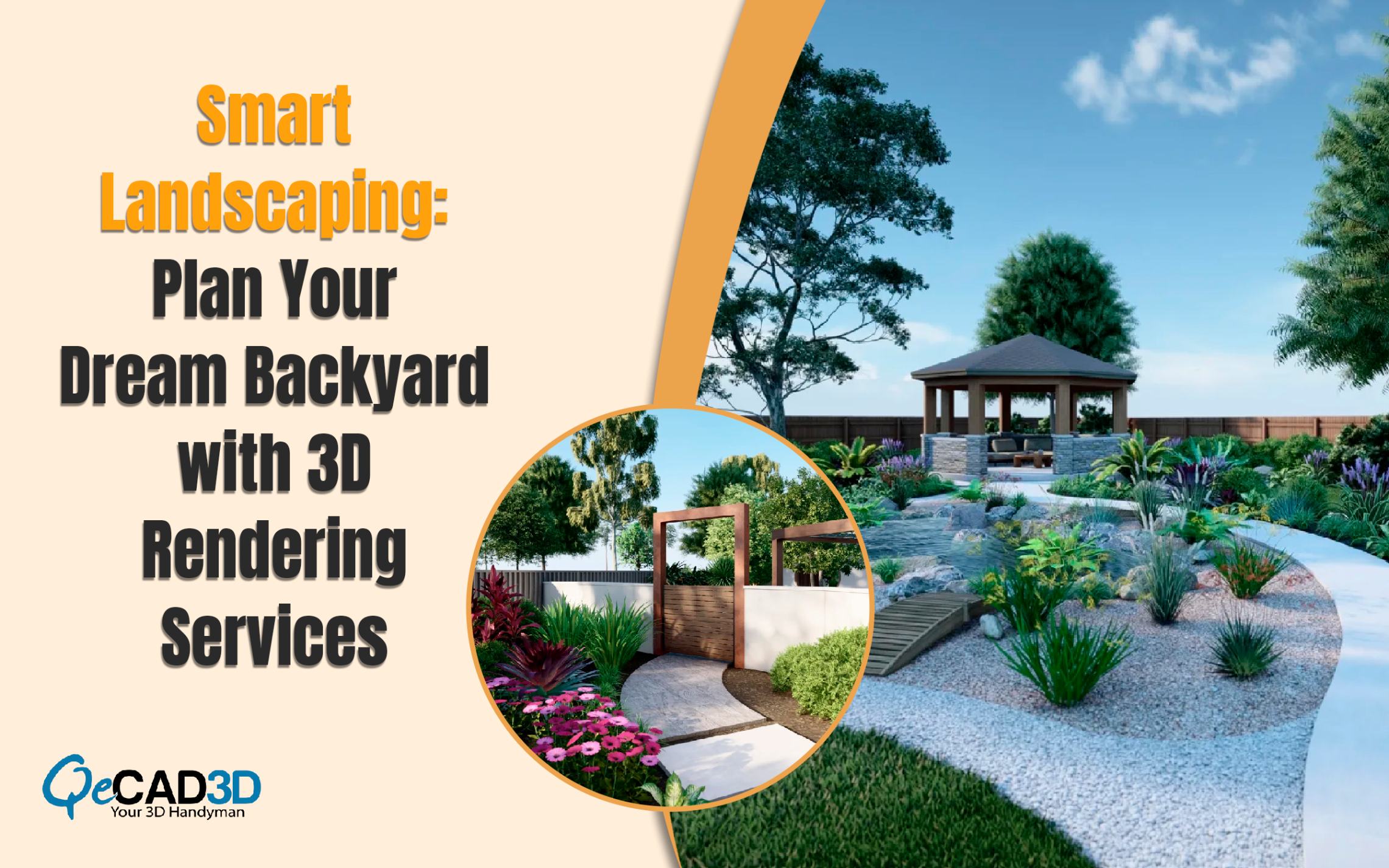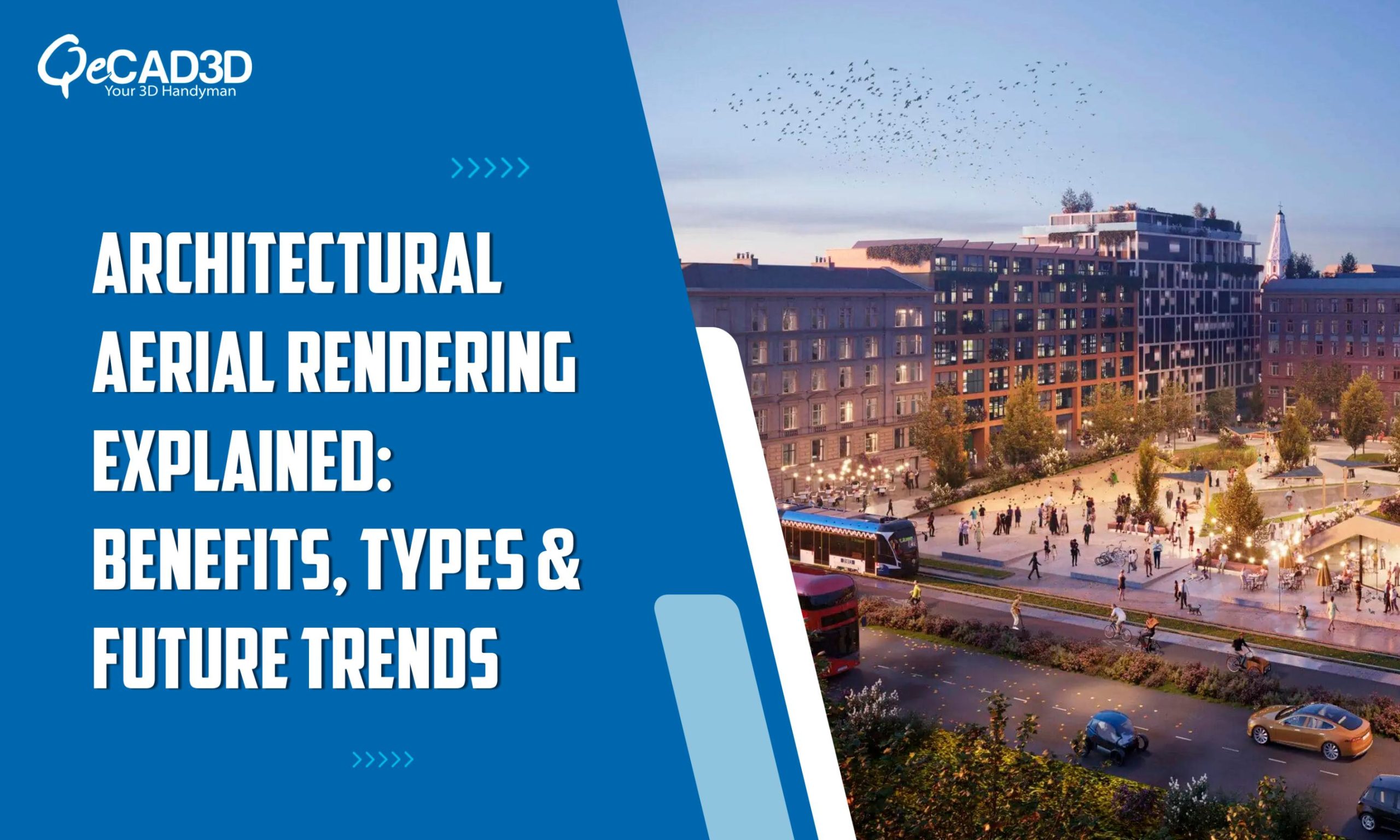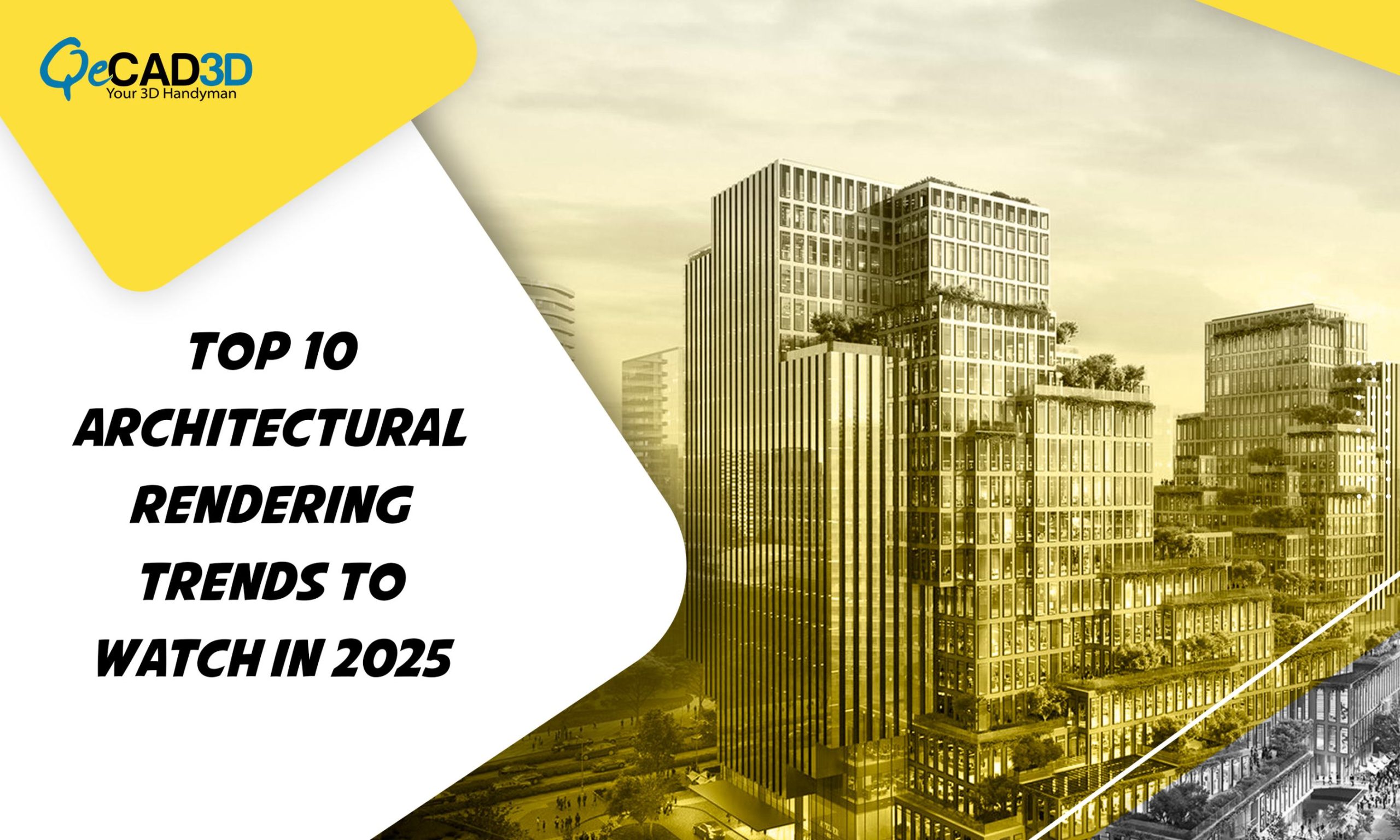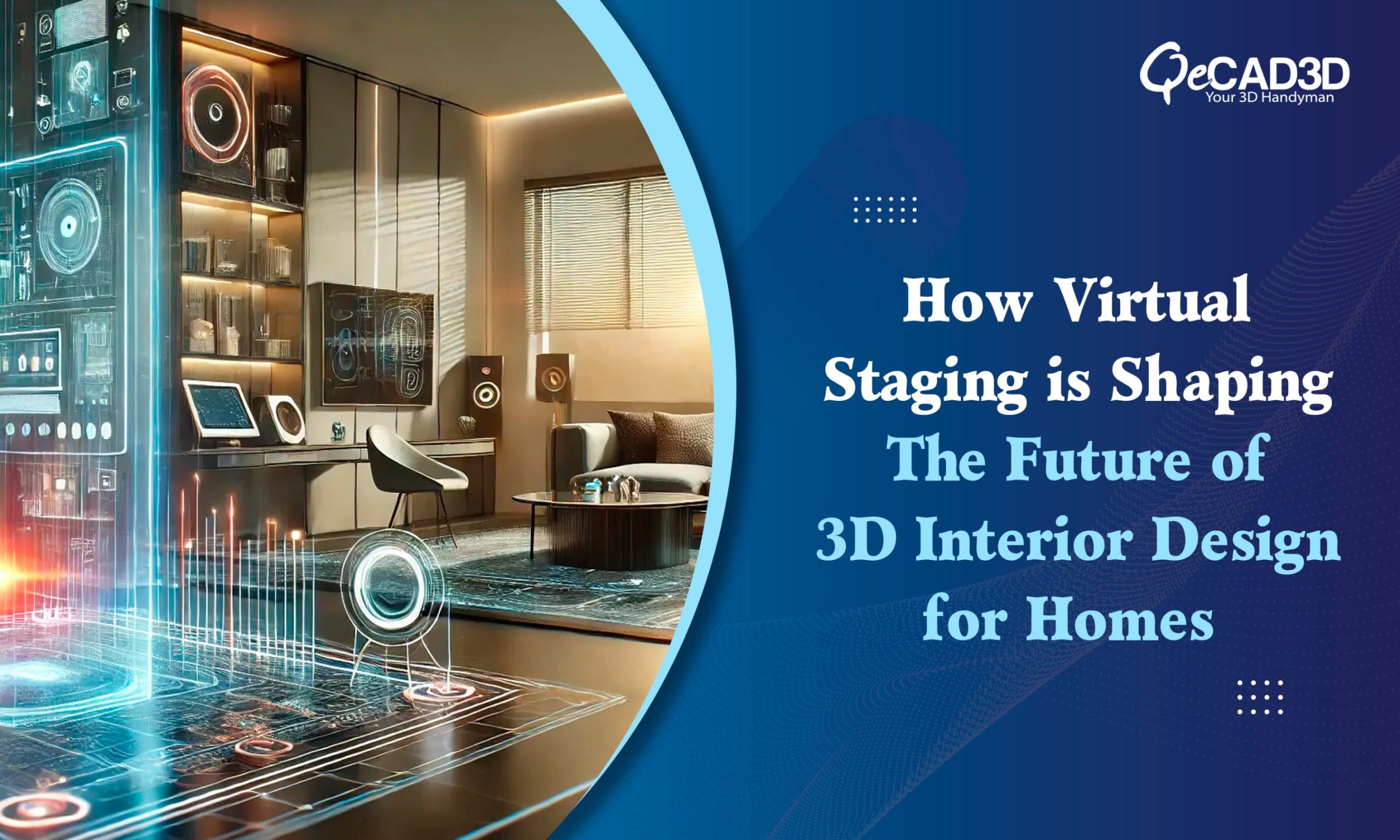The Crucial Role of 3D Villa Rendering: Bringing Architecture to Life
Introduction:
In the realm of architectural design, the importance of 3D rendering cannot be overstated.3D rendering involves creating two-dimensional images from a three-dimensional model, giving vibrant existence to virtual environments and objects. It involves intricate calculations of lighting, textures, and perspective to create realistic and visually appealing visualizations in fields ranging from animation and gaming to architectural design. Advancements in technology are propelling architects and designers forward to the 3D rendering to transform their visions into tangible, realistic representations. Among the various applications, 3D villa rendering stands out as a powerful tool that not only enhances the design process but also plays a pivotal role in communication and decision-making.
In this blog post, we will delve into the significance of 3D villa rendering and how it has become an indispensable part of the architectural landscape.
1) Visualizing the Unbuilt:
Architects often find themselves faced with the challenge of conveying their ideas to clients who may struggle to visualize a project based on 2D drawings alone. Enter 3D villa rendering, a game-changer in transforming abstract concepts into vivid, lifelike representations. With this technology, architects can breathe life into their designs, allowing clients to explore spaces and experience the intricacies of a villa before construction even begins. This not only enhances client satisfaction but also minimizes the risk of misunderstandings and design alterations later in the process.
2) Realism and Detail:
The devil is in the details, they say, and this holds especially true in architectural design. 3D villa rendering enables architects to showcase their designs with a level of realism and detail that was previously unattainable. From the texture of the walls to the play of light and shadow, every aspect of the villa interiors can be meticulously crafted and presented with effective Interior Rendering Services. Not only the interiors, but even the exteriors can be experienced well in different weather conditions with Exterior Rendering Services. This level of detail not only aids in better understanding but also allows for informed decision-making regarding materials, colors, and design elements.
3) Cost and Time Efficiency:
Traditionally, creating physical models to represent architectural designs was a time-consuming and expensive process. 3D villa rendering, on the other hand, offers a cost-effective alternative. With the ability to quickly generate realistic visualizations, architects can streamline the design process, decreasing the time and resources needed for conventional approaches. Additionally, any modifications or revisions can be made swiftly in the virtual space, saving both time and money compared to the adjustments needed with physical models.
4) Marketing and Presentation:
In a competitive market, the ability to effectively market and present architectural projects is paramount. 3D villa rendering provides architects with a powerful tool for creating visually stunning presentations and marketing materials. Whether it’s for a client pitch, promotional materials, or online platforms, realistic 3D renderings capture attention and make a lasting impression. This not only draws in prospective clients but also sets a standard of professionalism and innovation in the industry.
5) Collaborative Decision-Making:
Architectural projects involve various stakeholders, including clients, investors, and construction teams. 3D villa rendering facilitates effective communication and collaboration among these parties. Everyone involved can have a clear and shared understanding of the design, making it easier to align on decisions and move the project forward seamlessly. This collaborative aspect ensures that the end result aligns with the vision and expectations of all stakeholders.
The Game-Changing Role of 3D Villa Rendering in Modern Architecture
In the ever-changing area of architecture, where creativity intersects with functionality, 3D villa rendering emerges as a vital tool. Its ability to connect the realms of imagination and reality, coupled with its cost and time efficiency, makes it an indispensable asset for architects and designers. As technology continues to propel, the people in the AEC industry will be bound to adapt it. The impact of 3D rendering on the architectural landscape is only set to grow, promising a future where every architectural vision can be brought to life with unparalleled clarity and precision.


